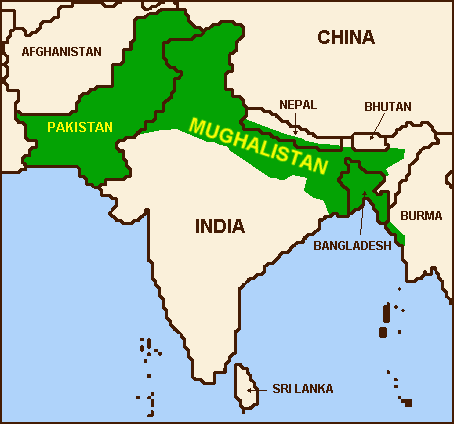After centuries of genocide, the jihad continues unabated against the Hindus.
They never rest, their jihad is always in continual flux, carving out for itself, yet more and more territory, destroying host cultures like swarms of locust on a field of wheat. The Baron explores the little known (outside of India) expansionist drive by the Muslims of Pakistan and Bangladesh, and the Muslim fifth column within India itself, in carving out a huge swath of Indian territory in the north to bridge the gap between the two Muslim states that at one time belonged to the Hindus of the Indian subcontinent.
The Hindu genocide at the hands of Islam lasted more than a thousand years, and continues in a reduced fashion to this day. It is the largest genocide in recorded history, with many millions of Hindus — possibly over a hundred million — slaughtered by the Muslim invaders, and countless millions more enslaved or forcibly converted to Islam. The sheer wanton destruction wielded by the Islamic conquest staggers the mind — the opulent flower of Hindu civilization was simply wiped out, with idols broken and burned, temples razed, and untold quantities of exquisite artifacts destroyed or melted down for their precious metals. Although it guttered, the flame of Hindu learning was never fully extinguished, but only after the arrival of the Pax Britannica did Hindu scholars regain the ability to realize their intellectual potential.
Make Way For Mughalistan
Baron Bodissey: A movement has recently emerged in India to restore the northern portion of the Mughal Empire in the form of an entity known as “Mughalistan” (or “Mughalstan”, depending on who is spelling it).
When India gained its independence from Britain in 1947, it was partitioned into two states, an Islamic one and a multi-religious one that was predominantly Hindu. The largest concentrations of Muslims were in East Bengal and what is now Pakistan, in Baluchistan and portions of Sindh, Kashmir, and the Punjab. These two regions, separated by a wide stretch of Hindu India, became East and West Pakistan respectively. In the early 1970s a civil war erupted between the two, resulting in the formation of Bangladesh out of what had been East Pakistan.
Before the partition of India, Indian Muslims had pushed for a corridor across northern India that would connect the two halves of the new Islamic state. However, the Muslim population in those regions was not considered sufficient to warrant its inclusion, and the corridor never materialized.
Now, more than sixty years later, the idea of an Islamic corridor has returned. In the intervening decades the Muslim portion of India, as everywhere else, has increased relative to the non-Muslim population. Devout Muslims in the subcontinent have refloated the idea of a corridor connecting Pakistan and Bangladesh. It would include heavily Muslim regions in Northern India, southern Nepal, and coastal Burma. The proposed name for resulting Islamic superstate would be “Mughalistan”, echoing the glory of the Moghul Empire before the arrival of the British.
The Mughalistan movement has a long-term goal that includes much more of India than just a northern corridor. Thanks to their fecund demographics, Muslims are now a much larger proportion of the population across swathes of central India, including the Hyderabad region where the recent terror attacks took place.
As Terresa Monroe-Hamilton writes in The Noisy Room:

